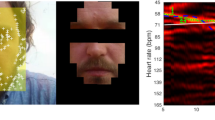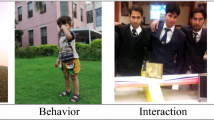Abstract
Although many studies have attempted to detect the hand postures of a mobile device to utilize these postures as a user interface, they either require additional hardware or can differentiate a limited number of grips only if there is a touch event on the mobile device’s screen. In this paper, we propose a novel grip sensing system, called SmartGrip, which allows a mobile device to detect different hand postures without any additional hardware and a screen touch event. SmartGrip emits carefully designed sound signals and differentiates the propagated signals distorted by different user grips. To achieve this, we analyze how a sound signal propagates from the speaker to the microphone of a mobile device and then address three key challenges: sound structure design, volume control, and feature extraction and classification. We implement and evaluate SmartGrip on three Android mobile devices. With six representative grips, SmartGrip exhibits 93.1% average accuracy for ten users in an office environment. We also demonstrate that SmartGrip operates with 83.5 to 98.3% accuracy in six different (noisy) locations. Further demonstrating the feasibility of SmartGrip as a user interface, we develop an Android application that exploits SmartGrip, validating its practical usage.













Similar content being viewed by others
Notes
Note that the criterion volume depends on mobile devices. For Samsung Galaxy S8 and Google Pixel, the criterion volume corresponds to 60%. It is not difficult to calibrate the criterion volume for target mobile devices.
After applying FFT, we have 512 features with 0–24kHZ. We remove features with 0–16kHZ as well as additional features related to fade in & fade out, yielding 172 features.
References
Creem SH, Proffitt DR (2001) Grasping objects by their handles: a necessary interaction between cognition and action. J Exp Psychol Hum Percept Perform 27(1):218
MacKenzie C, Iberall T (1994) The grasping hand. advances in psychology, vol 104. New York: North Holland 26:1–32
Yoon D, Hinckley K, Benko H, Guimbretière F, Irani P, Pahud M, Gavriliu M Sensing tablet grasp + micro-mobility for active reading, in: Proceedings of the 28th Annual ACM Symposium on User Interface Software & Technology, ACM, pp 477– 487
Wimmer R, Boring S (2009) Handsense: discriminating different ways of grasping and holding a tangible user interface. In: Proceedings of the 3rd International Conference on Tangible and Embedded Interaction, ACM, pp 359–362
Taylor BT, Bove VM Jr (2009) Graspables: grasp-recognition as a user interface. In: Proceedings of the SIGCHI Conference on Human Factors in Computing Systems, ACM, pp 917–926
Cheng L-P, Liang H-S, Wu C-Y, Chen MY (2013) iGrasp: grasp-based adaptive keyboard for mobile devices. In: Proceedings of the SIGCHI Conference on Human Factors in Computing Systems, ACM, pp 3037–3046
Ono M, Shizuki B, Tanaka J (2013) Touch & activate: adding interactivity to existing objects using active acoustic sensing. In: Proceedings of the 26th Annual ACM Symposium on User Interface Software and Technology, ACM, pp 31–40
Cheng L-P, Hsiao F-I, Liu Y-T, Chen MY (2013) iRotateGrasp: automatic screen rotation based on grasp of mobile devices, in: Proceedings of the SIGCHI Conference on Human Factors in Computing Systems, ACM, pp 3051–3054
Goel M, Wobbrock J, Patel S (2012) Gripsense: using built-in sensors to detect hand posture and pressure on commodity mobile phones, in: Proceedings of the 25th Annual ACM Symposium on User Interface Software and Technology, ACM, pp 545–554
Park C, Ogawa T (2015) A study on grasp recognition independent of users’ situations using built-in sensors of smartphones. in: Adjunct Proceedings of the 28th Annual ACM Symposium on User Interface Software & Technology, pp 69–70
Goel M, Jansen A, Mandel T, Patel SN, Wobbrock JO (2013) Contexttype: using hand posture information to improve mobile touch screen text entry. In: Proceedings of the SIGCHI Conference on Human Factors in Computing Systems, ACM, pp 2795–2798
Zhou Z, Diao W, Liu X, Zhang K (2014) Acoustic fingerprinting revisited: generate stable device ID stealthily with inaudible sound. In: Proceedings of the 2014 ACM SIGSAC Conference on Computer and Communications Security, ACM, pp 429–440
Ackerman E, Oda F (1962) Acoustic absorption coefficients of human body surfaces. Tech. rep., DTIC Document
Ewins D (2000) Modal testing: theory, practice, and application, Research Studies Press,
Schwarz BJ, Richardson MH (1999) Experimental modal analysis. CSI Reliability week 35(1):1–12
Tung Y-C, Shin KG (2016) Expansion of human-phone interface by sensing structure-borne sound propagation. In: Proceedings of the 14th Annual International Conference on Mobile Systems, Applications, and Services, ACM, pp 277–289
Tung Y-C, Shin KG (2015) Echotag: accurate infrastructure-free indoor location tagging with smartphones. In: Proceedings of the 21st Annual International Conference on Mobile Computing and Networking, ACM, pp 525–536
Plack CJ (2005) The sense of hearing. Lawrence Erlbaum Associates Publishers
Lazik P, Rowe A (2012) Indoor pseudo-ranging of mobile devices using ultrasonic chirps. In: Proceedings of the 10th ACM Conference on Embedded Network Sensor Systems, ACM, pp 99–112
Chang C-C, Lin C-J (2011) Libsvm: a library for support vector machines. ACM Transactions on Intelligent Systems and Technology 2(3):27
Kim N, Lee J (2017) Towards grip sensing for commodity smartphones through acoustic signature. In: Proceedings of the 2017 ACM International Joint Conference on Pervasive and Ubiquitous Computing, ACM, pp 1–4
Funding
This work was supported by the National Research Foundation of Korea (NRF) grant funded by the Korea government (MSIT) (2019R1A2B5B02001794). Jinkyu Lee is the corresponding author.
Author information
Authors and Affiliations
Corresponding author
Additional information
Publisher’s note
Springer Nature remains neutral with regard to jurisdictional claims in published maps and institutional affiliations.
A short, preliminary version of this paper has been presented as a poster [21], which is 4 pages long.
Rights and permissions
About this article
Cite this article
Kim, N., Lee, J., Whang, J.J. et al. SmartGrip: grip sensing system for commodity mobile devices through sound signals. Pers Ubiquit Comput 24, 643–654 (2020). https://doi.org/10.1007/s00779-019-01337-7
Received:
Accepted:
Published:
Issue Date:
DOI: https://doi.org/10.1007/s00779-019-01337-7




